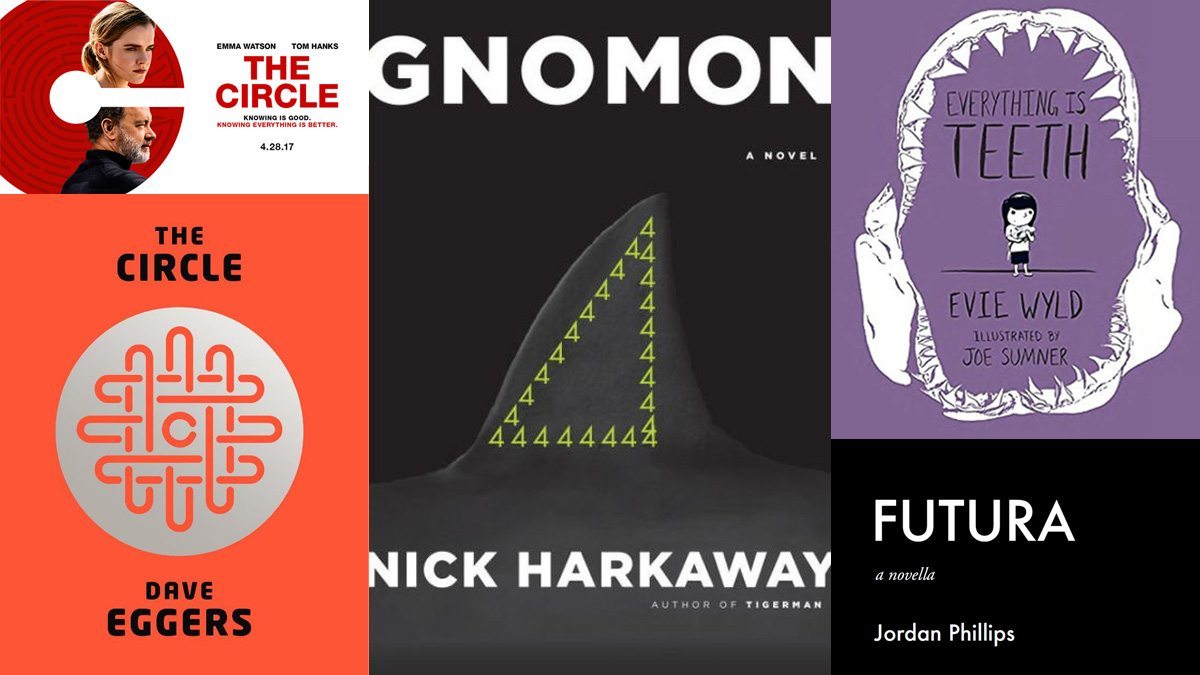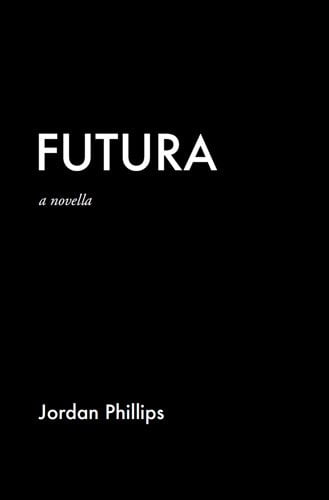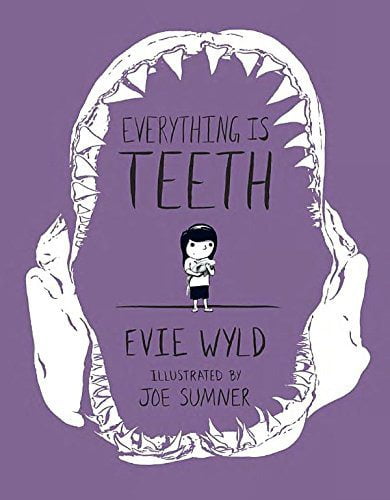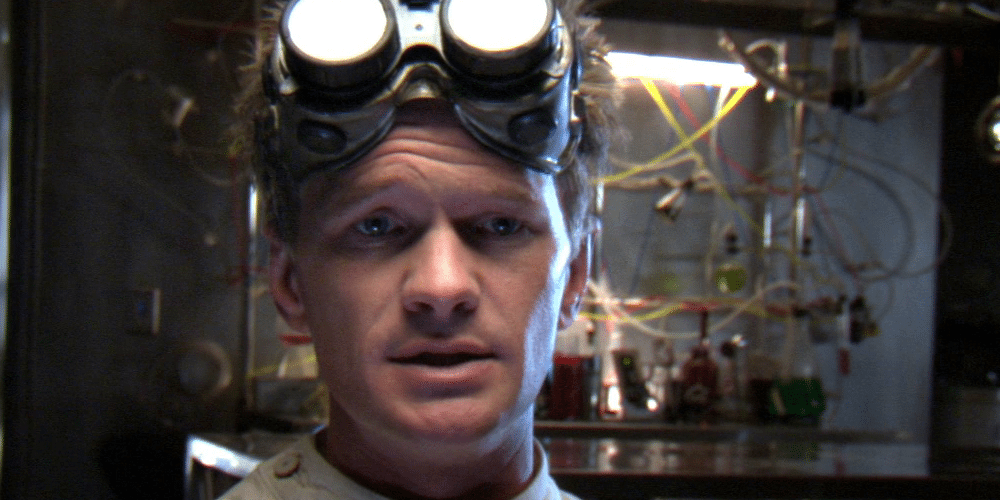Okay, so usually my Stack Overflow columns are about a pile of books on a particular topic, so it’s a little unconventional to focus on one particular book. On the other hand, Nick Harkaway’s Gnomon is almost a stack of books in itself. I do have a few other books and references that tie in, but my focus today will primarily be on Gnomon.
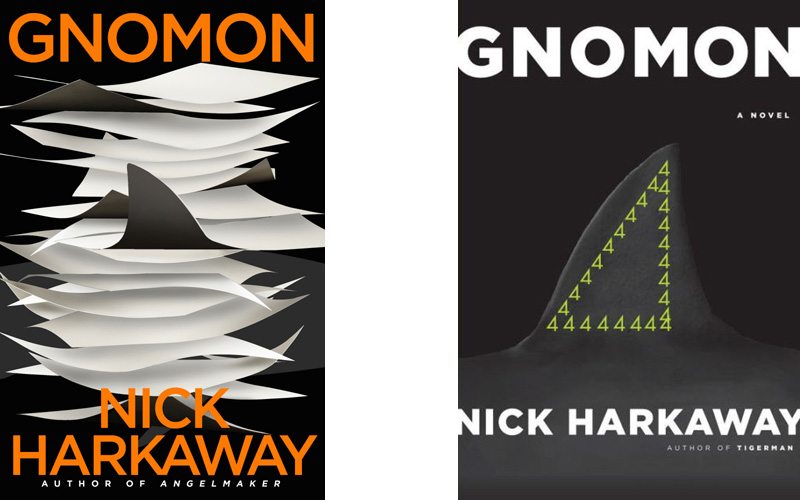
Gnomon by Nick Harkaway
So, let’s dig in!
I mentioned Gnomon a month ago in my Stack Overflow about artificial intelligence, when I’d just started reading it, because there is some AI at work here, though it’s not entirely the focus of the book. The story is more about a surveillance state, the death of a suspect during interrogation, and the resulting fallout from the investigation.
Now, if you’re the sort of person who likes knowing as little as possible before diving into a book, here’s my brief pitch: it’s weird (like Harkaway’s other books), it has a lot of surprising moments, and it’s sort of a cautionary tale about increasing surveillance. There were a couple spots where I thought the story dragged a little, but for the most part I found it really engaging and entrancing. If that’s enough to hook you, then go ahead and dive in, and come join me after you’re done.
In the world of Gnomon, England is now under total surveillance. (The rest of the world hasn’t quite caught up yet.) There are cameras pretty much everywhere, and it’s all run by a system that tracks and analyzes behavior patterns. If anything seems out of the ordinary or matches a pattern that corresponds to illegal behavior, it’s quickly detected and police are sent to intervene. The Witness, as it is known, can’t be bribed or distracted, and is “the perfect police force.” It’s a little bit like Minority Report, though it’s not predicting the future—it’s just very good at analyzing the present. The Inspectors act as the hands of the Witness, also filling in the gaps where cameras might not see.
The System also brings equality: government is now truly “by the people,” as important issues are automatically assigned to representative groups of people to discuss and vote, and citizens are expected to contribute a certain amount of time to these governance tasks. It reminds me a bit of the world promised in The Circle by Dave Eggers, which brings me to my first aside:
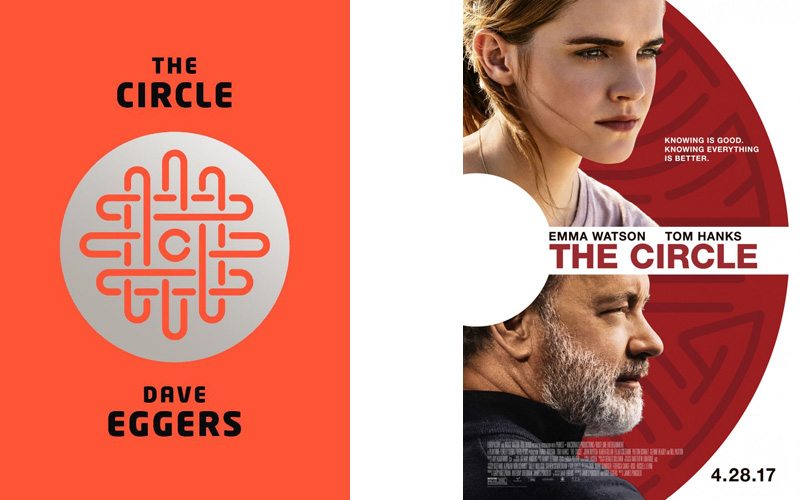
The Circle by Dave Eggers
The Circle is a book by Dave Eggers, originally published in 2013. It was made into a film in 2017 starring Emma Watson and Tom Hanks, fairly true to the book though with a somewhat different ending (which I won’t spoil here). In the book, the Circle is an all-encompassing company that has replaced the likes of Google, Facebook, Twitter, Apple, Samsung … basically it’s the company. If you’re on social media, you’re on the Circle. The Circle has tied together all of your countless online accounts and created TrueYou, your one “true” identity, so that you don’t have to remember all those passwords.
Of course, with that convenience comes the price: privacy. More and more people entrust the Circle with everything: not only their social media messages, but their location, their health data, their financial records. Over the course of the story, they introduce tiny cameras that can be placed nearly anywhere, providing a wealth of data and tracking (including facial recognition and night vision). One character proposes: since there are so many people with a TrueYou account, why not tie that to voter registration? Why not make voting something that can be done from your Circle account, thus capturing the real voice of the population in real time? (And, while we’re at it, why not make it a legal requirement to have a Circle account?)
While the book does get a bit heavy-handed with its symbolism at times, it’s still a fascinating exploration of a society that is becoming more and more connected online, willing to trade more and more privacy for safety or convenience or other perceived ideals. The movie does feel at least a little more subtle, though it’s clear in both cases that it’s a warning: yes, there are some amazing things that can be done with technology, but it’s also important to ask the question “have we gone too far?” And the various characters disagree on the answer to that question.
I read the book back when it came out, and then re-read parts of it while watching the film recently. When reading the book, I was a little incredulous at Mae, the protagonist, who seems to buy into everything the Circle does fully and without reflection. She drinks the Kool-Aid, never questioning that every step toward its center is a step in the right direction. In Dave Eggers’ world, we voluntarily create Big Brother. Emma Watson does a great job as Mae, I think giving a few more hints of skepticism before she’s won over by Tom Hanks as Bailey. And Tom Hanks is fantastic in that role: he’s the guy that you feel like you can trust with anything, and so when he pitches you an idea that seems over the top, like putting cameras all over your own home so that people can watch your every move, you say, “wow, yeah, I hadn’t ever thought of it that way.”
(In a weird life-imitates-art-imitates-life cycle, the made-up campus of the Circle in the film looks a lot like Apple’s actual new headquarters in Cupertino, a place designed to encourage serendipitous interactions between employees, filled with perks and totally-not-mandatory-but-of-course-you-want-to-do-them extracurricular activities. Curbed has an article comparing the two, with a little pop quiz challenging you to guess if a description is from the novel or from the Wired article about the Apple headquarters.)
In Gnomon, that “perfect democracy” has been put in place. The cameras are ubiquitous. Crimes of passion are uncommon, and the citizens feel safer, knowing that there are unsleeping, unbiased eyes watching them at all times. In that sense, it’s a bit like the world of The Circle after widespread adoption, though maybe without the young, chipper employees.
Both of these stories call to mind the article I read in Margaret Atwood’s In Other Worlds about “ustopias”: the idea that utopias and dystopias are two sides of the same coin. I found that Ursula Le Guin had also written a piece that explored some similar territory. In a utopia, everything is supposed to be perfect, because you’ve created a perfect community and everyone knows their place in it and is happy with it. Things work as they should. But what happens to the people who don’t fit into it? Where do they go? Well, that’s where you get the dystopia—because quite often building a “perfect” community means that you have to find some way to remove those who are undesirable, whether that’s by physically relocating them or by somehow genetically engineering them away. And many dystopian stories have, of course, some sort of failed utopia as a premise.
You don’t have to look very far to see that one person’s utopia is another person’s dystopia: regardless of where you fall on the political spectrum, you’d probably agree that people in America have very different ideas about what is ideal for our nation. One side’s vision of a perfect society seems nightmarish to their opponents.
Futura by Jordan Phillips
It was with that in mind that I approached Futura, a novella that was pitched to me as a counterpoint to these dark, dystopian futures. Here was a story that “imagined a bright future for the entire human race” and “pushes back on alarmist views of technology and artificial intelligence.” I was very curious to see where the story would go, and what sort of utopian vision I would find. (Despite the title and cover, it’s not actually about the typeface.)
In Futura, artificial intelligence and automation have made many jobs obsolete: there’s no reason a human would ever need to cook, clean, manufacture anything, drive. Obviously this had a huge impact on the world’s economy, so the world’s governments have finally put into place a universal basic income: everyone gets a place to live, public transportation, health care, food, and a little bit of entertainment. There’s more available, if you find a job that people are still willing to pay for, but many people—the Basics—are satisfied with not having to work.
The story itself focuses on Ruby, an American expat who now lives mostly in Paris (not, perhaps unsurprisingly, like the author herself), and much of the story is about how fantastic Paris is compared to everything else. If the world of Futura is a utopia, Paris is the gem in its crown: because it hasn’t been filled with skyscrapers, it’s been covered by a dome that filters out the air; the backlash against the futuristic modern aesthetic (as pioneered by Apple) has resulted in a Nouveau Nouveau movement that put Paris at the forefront of what’s hip and trendy.
What I didn’t expect, though, was that the people in the story would feel so miserable. Ruby has baby fever and at the beginning of the book has finally ended a long-term relationship because her partner wasn’t interested in having kids. Her friend Blythe seems to be happily married with children, but then laments that nobody told her how unrewarding and tiring and annoying it can be to be a parent. Ruby finally finds love—she thinks—but it turns out the man is a sociopath who falls in love and then moves on, looking for his next “high.”
In fact, the only people that seemed genuinely happy to me were the Holdouts—Ruby’s friends who moved out of the city into onto a farm, eschewing technology and performing obsolete tasks like actually cooking meals for themselves. Ruby seems to get along well and has a good experience visiting them, but then dismisses them as “not interested in possibilities” and “waiting to die.”
In the end, I felt like Phillips’ view of the future may have been a utopia for her, but it’s not for me: a world in which “most people … had realized that the elusive search for meaning was futile, because human life didn’t have meaning” doesn’t seem perfect to me. And while I’m no Luddite and I wouldn’t be the first in line to move to a farm and grow my own food, I’m not sure that life in this future version of Paris is for me. That said, though, it’s still an interesting story—a brief glimpse into a possible future, whether you want to call it a dystopian vision or a utopian vision.
As with Futura, there are always Holdouts. In The Circle, Mae’s ex-boyfriend is a holdout: he works with his hands, he’s not really much for social media. He doesn’t like the way that Mae’s life is all online, that she’d rather text and doesn’t understand why he wants to have a conversation face-to-face, unmediated by technology.
In Gnomon, the holdout is a mysterious woman named Diana Hunter, who has died during an interrogation as the book begins. Interrogation isn’t a process where the Inspector sits you down and talks to you. Instead, you get hooked up to a machine that basically records your mind and spits it out in a data file; the Inspector uses a terminal to view the file, unspooling memories. The procedure is generally painless, and can even make you feel better—most interrogations are precautionary and may not result in an arrest, and end up acting a bit like a neurological tune-up.
Except, in Hunter’s case, it killed her.
Inspector Mielikki Neith is put in charge of investigating her death, and the first order of business is to view the data file from her interrogation, and she also pays a visit to Hunter’s home to see if she can find any clues there. From what she can gather, Hunter had tried to opt out of the System, turning her home into a Faraday cage where no cameras were permitted and online connections no longer function. But that in itself isn’t a crime.
As Neith plays out the data file, we as readers encounter it as text—and this is where my description of Gnomon as a stack of books plays out. Hunter was fighting the interrogation by playing out other stories—she had constructed elaborate memories that kept her real memories hidden, using Scheherazade’s ploy to prolong the inevitable. And so instead of one novel, you read about a Greek banker who has an encounter with a shark that changes his life; an alchemist from Carthage who was St. Augustine’s lover in his youth and the mother of his son; an Ethiopian artist whose daughter is creating a videogame about a surveillance state … the stories overlap and intersect in various ways.
The shark is a recurring motif in the book, appearing both as a literal shark and as a metaphor, a goddess, a string of numbers. So that brings me to my last aside:
Everything Is Teeth by Evie Wyld, illustrated by Joe Sumner
Everything Is Teeth is a comic book memoir from a couple years ago, and I just happened across it while I was reading Gnomon and had sharks on the brain. It turns out, so did little Evie as she was growing up, spending summers in Australia. She is obsessed with Rodney Fox, a man she reads about who survived a shark attack. She imagines sharks in the bathtub, swimming around the carpet in the living room while she keeps her toes out of reach, attacking her brother as he surfs.
There isn’t really a plot to the book, a story that you follow; instead, it evokes Wyld’s state of mind at the time, the way that her attention was consumed by the idea of sharks. The illustrations look a little crude to me, but there is a great effect where the sharks are drawn in a photorealistic style with pencil shading and color, contrasting with the more cartoonish style of the rest of the images, with their flat shading.
The sharks in Evie’s imagination reminded me of the shark that Constantine sees in Gnomon, the way that he feels totally connected to this vast creature that allowed him to live during his unexpected encounter in the Mediterranean Sea. As Hunter’s memories spill over into the other plots, the shark sometimes makes its way into those stories as well.
The deeper Neith digs, the more questions arise: what was so important for Hunter to hide that she constructed these elaborate mental fortifications? How was it even possible for her mind to block the process? Was her death intentional or accidental?
In the meantime, Harkaway is asking questions of his own: how far should the government go in pursuit of safety for its citizens? What is the right balance between security and privacy? He also plays with some curious ideas about identity and the mind, about what makes somebody who they are, and whether that is something that is measurable or reproducible. There are some aspects of Gnomon that remind me of Snow Crash and Lexicon, both books that use the idea of language as a virus.
As I said above, there were a few rough patches that I had a little trouble with, but most of the book grabbed me and pulled me in and wouldn’t let go (like a shark, you might say). Gnomon is ambitious and wide-ranging; the story jumps around from ancient Carthage to a near-future England. There are elements that push the boundaries of reality, although (as with some of Harkaway’s other books) it’s not entirely clear whether to call it science fiction or fantasy or magical realism. There is commentary on wealth and politics and technology and literature, so if you prefer your fiction to be somehow apolitical, this is probably not the right place to look. However, if you enjoy critical commentary on the world presented as a riddle, wrapped in a mystery, inside an enigma, you will probably love getting lost in Gnomon.
Come on in, the water’s fine! (It’s that shark you have to watch for.)
Current Stack
Aside from the above, I just picked up a copy of The Boneshaker by Kate Milford, having enjoyed her Greenglass House series and wanting to see what else she’s written. I’m enjoying the turn-of-the-century tale, which reminds me a little of Ray Bradbury’s Something Wicked This Way Comes, with a creepy carnival. Stay tuned: I may have a short interview with Milford to share soon!
Disclosure: I received advance reader copies of Gnomon and Everything Is Teeth, and a review copy of Futura.)
